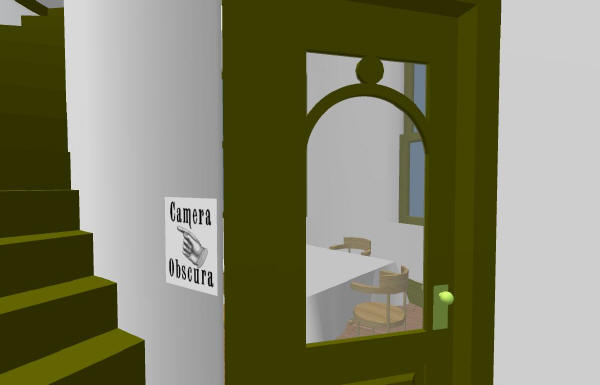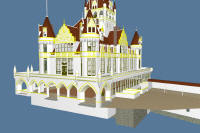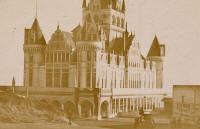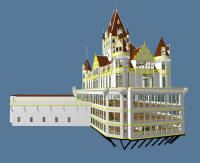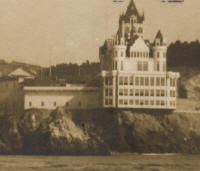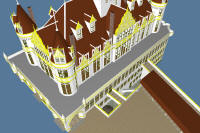|
The Making of the Tour John Hall, Aug 2005 |
|||
|
My interests are historical railroads and Victorian architecture. As I searched the Internet for information on the Ferries and Cliff House Railroad I stumbled across the Cliff House Project website. I had always been fascinated by the 1896 Cliff House and was intrigued that the original plans for the building still existed. After studying the plans I realized that they were complete enough to guide me through the creation of a reasonable facsimile of the original structure. I design model railroad layouts using a Computer Aided Design, CAD, program called 3rdPlanIt. It is specifically designed for model railroads but is actually almost a full CAD program that allows you to model not only railroads but buildings and landscape. I decided to use this program to create the 1896 Cliff House. I started my “construction” with a thorough reading of the plans. The plans do tell us an enormous amount of information; things such as room descriptions, stairways, floor heights, ceiling details, wainscoting type, chandelier location, restrooms, kitchens, and boiler room. For a description of the various floors, click here. I studied all of the photographs on the Cliff House Project website and became familiar with the building. My construction is based on the plans, photographs, and a basic knowledge of Victorian architecture. Some of what you see on the tour is pure speculation but much is based on fact, both plans and photos. I found out early on that the plans and the final structure shown in the photographs were not the same. It was obvious that corners were cut and things left out. For example, the tower roof on the plans is approximately 10 feet higher than it was constructed. The plans did not call for windows on the First and Second floor Porches. Walls were constructed in different places that I am sure made more sense to the contractor. A few drafting errors show up here and there. The biggest being the orientation of the tower floors shown on Sheet 34. The elevator floor is in the wrong location in relation to the stairwells. And finally the Camera Obscura is shown in a different tower than it was actually constructed. The above image illustrates my point. The plan elevation is how it was designed and the photo is from down the beach. There is some distortion in the photo because it was taken at a lower altitude but it does demonstrate what I am talking about. Notice that the first and second floors don't have windows in the design version. This can also be seen on the floor plans where openings are shown but no windows. Note the height of the main tower, and the height of the tower roof. I built my original version like the plans and the tower roof never looked correct. I reduced it 10 feet in height and it looked much better. Note the width of the main tower and the width of the large dormer (photography gallery) below the tower. In the plans, the dormer is narrower than the tower and in the original they are the same size. I ran across this one as I tried to construct the building. In order to create the plan version, the interior walls on the fifth floor, including the tower, would not be properly supported by the walls below. I decided after looking at many photos that the contractor agreed with me and made the dormer the same width as the tower. After I constructed the Cliff House, I realized as I toured the inside of the structure, that I needed something to look at out the windows. So I began a study of the area around the Cliff House. I studied the photographs, looked at maps, and began to create a long lost world. The software worked very well as this is what it was designed for. I built landforms, located roads, railroads, streetcar tracks, buildings, and amusement rides. Using the 3rdPlanIt software, I created panoramas of 103 locations, including rooms, porches, and outside spots. First I placed the “camera” at the correct location and height. Then I took 8 “photos” by rotating the camera 45 degrees between each shot. These photos were entered into VRWorx which converts images to Quicktime VR movies. Then VRWorx converts them into one panorama photo. And the final result is a movie of one room. Then the room movies are combined into one large movie. After eleven months, the result of all this work is a tour through the 1896 Cliff House. I hope you enjoy the tour as much as I did creating it. I wish to thank Gary Stark for his inspiring Cliff House Project website and John Martini for use of his maps and photographs of the area. Without these two gentlemen there wouldn't be a Tour.
|
|
Level Descriptions First Floor The first floor has simple architectural finishes, employee bedrooms, unfinished rooms, boiler room, coal storage, wooden wainscoting in the main room, 10 foot ceilings, access to the second floor by only one stairway, the elevator, or the drive thru and lower walk. Second floor The second floor has a mix of architectural features, both wooden wainscoting for the employee dining room and fancy Lincrusta wainscoting for a bar room, the hallway, and one suite of dining rooms. The floor includes the butcher shop and some kitchen prep area, access to third floor is via three stairways and elevator. The floor has 12 foot ceilings and outside access on the side from the area of the "Lower Porch" sign. Third Floor The third floor is fancier than the floors below. All of the wainscoting is Lincrusta, except the restrooms that had wooden wainscoting. The floor includes the large "Main Dining Room", "Main Bar", fancy parlor, and office. The floor had 16 foot ceilings with access to fourth floor via one stairway or the elevator. The porch had a large vestibule, and access to the Shell Room in the back or onto Cliff Drive where carriages could drop someone at the door. It is interesting that the building does not have a lobby as we would expect on a building of this type today. Fourth Floor I believe the fourth floor was the first class area. Access to this floor is controlled via one stairway or the elevator, both of which are opposite the third floor office and therefore easy to control. The floor has fine architectural detail with Lincrusta wainscoting everywhere but the private dining rooms. The Art Gallery is here along with a fancy Main Parlor with attached bar and separate Women's Parlor. The floor has numerous large private dining rooms, 18 foot ceilings, lots of glass, and the large outside porch or balcony. Fifth Floor The fifth floor, or First Attic, has simple architectural details, access to corner towers, a Photography Studio, and Photo Gallery. The floor has 13 foot ceilings and access to the main tower via stairs or elevator. Access to the tower stair is controlled through the Photography Studio. Sixth Floor The sixth floor has an unfinished attic and is the landing for the stairs and elevator to the tower. The Tower The tower had large windows and simple architectural details. |
Animation showing construction from the ground up...
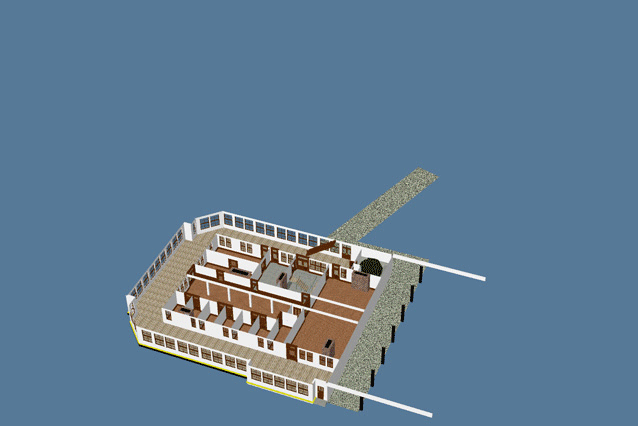
Detailed Renderings
|
Paint Colors We have no color photographs of the Cliff House. Our reference is colorized postcards, like this especially nice one... click image to enlarge
|
|
Furnishings The furnishings are based on the scant photographic reference we have (below). The chairs pictured appear very similar to this restored antique chair (right). |
|
|
Camera Obscura While not definitely proven, it seem likely that a camera obscura was constructed in the SW tower. Click here and judge for yourself... |
|
None of the photos show inside the light well. That is mostly conjecture. The plans show a coal chute and this photo may show the top of the chute just outside of the stable. The Sanborn map indicates a tank inside the light well that probably was the water supply for the boiler. |
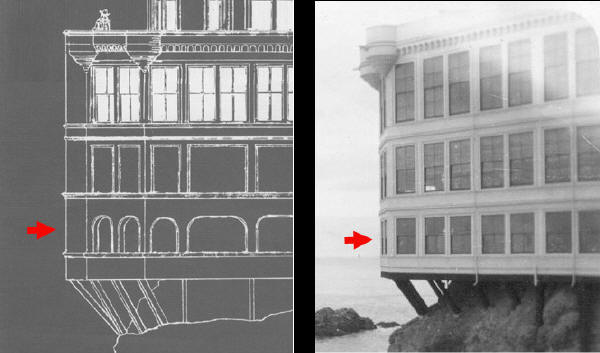
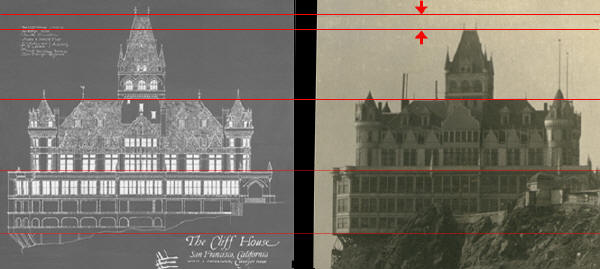
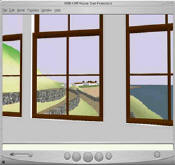
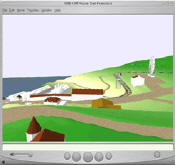
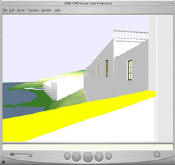
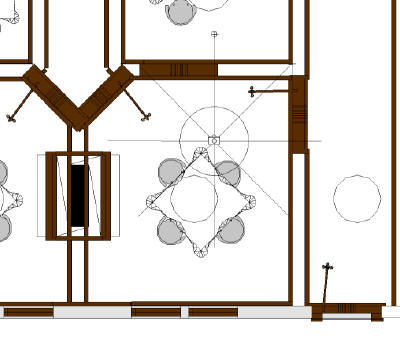
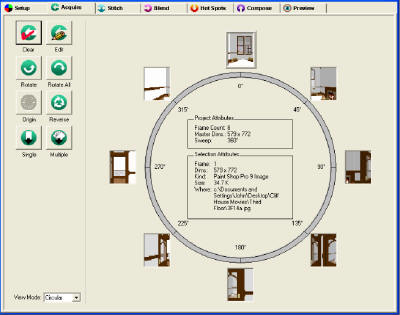

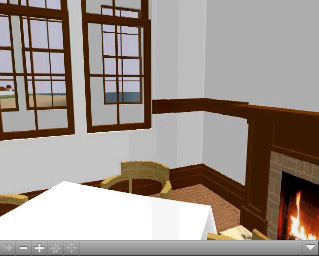


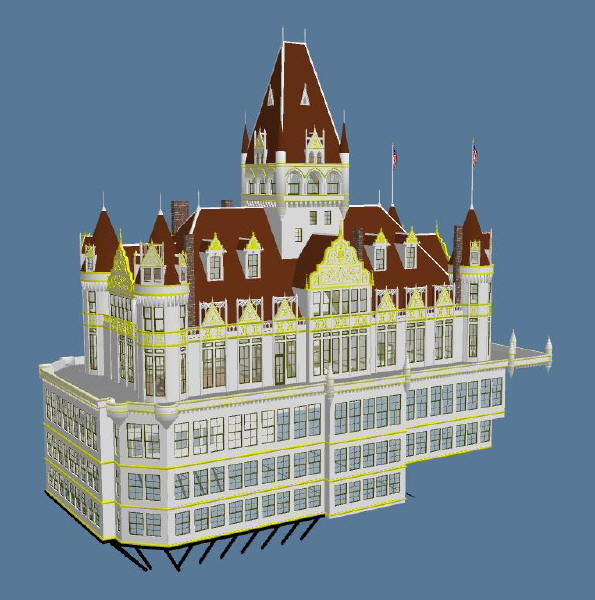
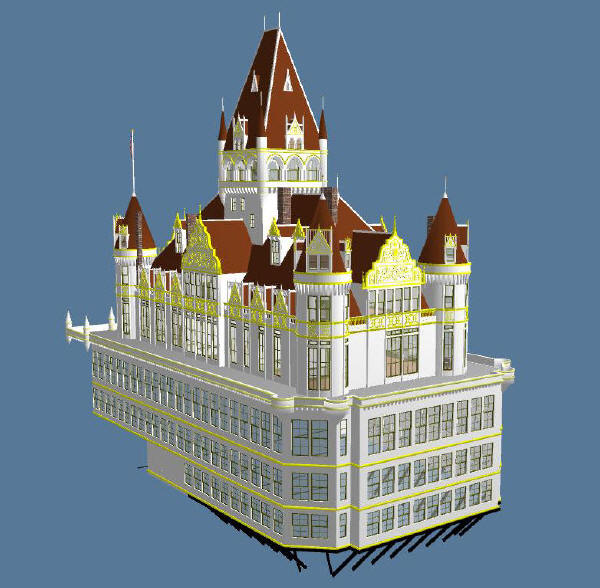

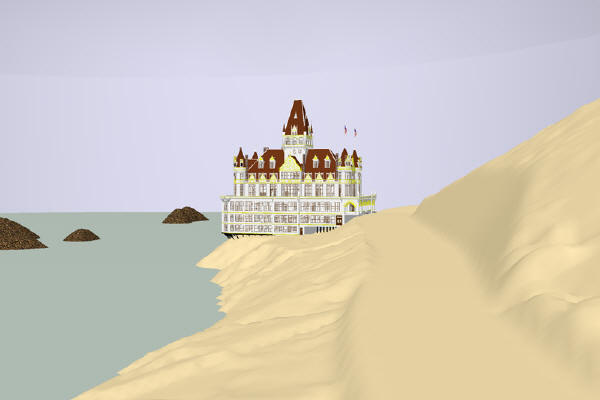



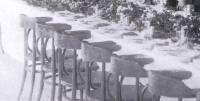

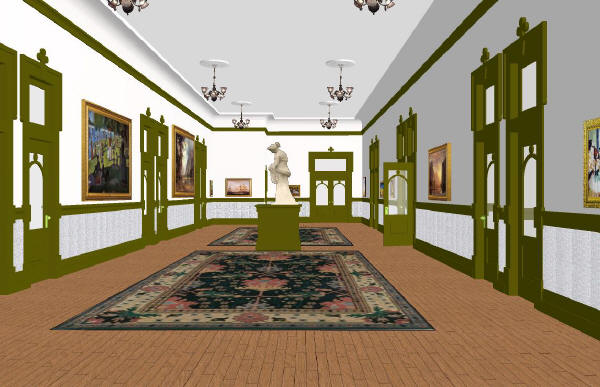
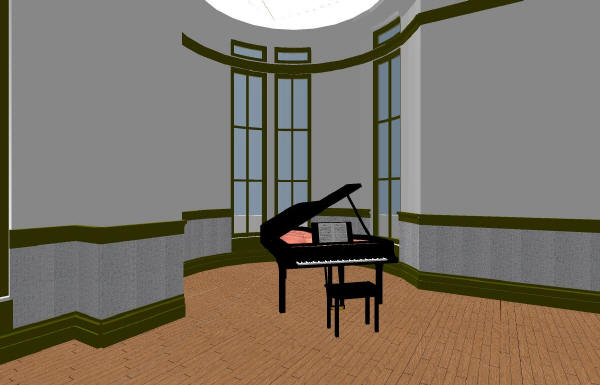
_small.jpg)
